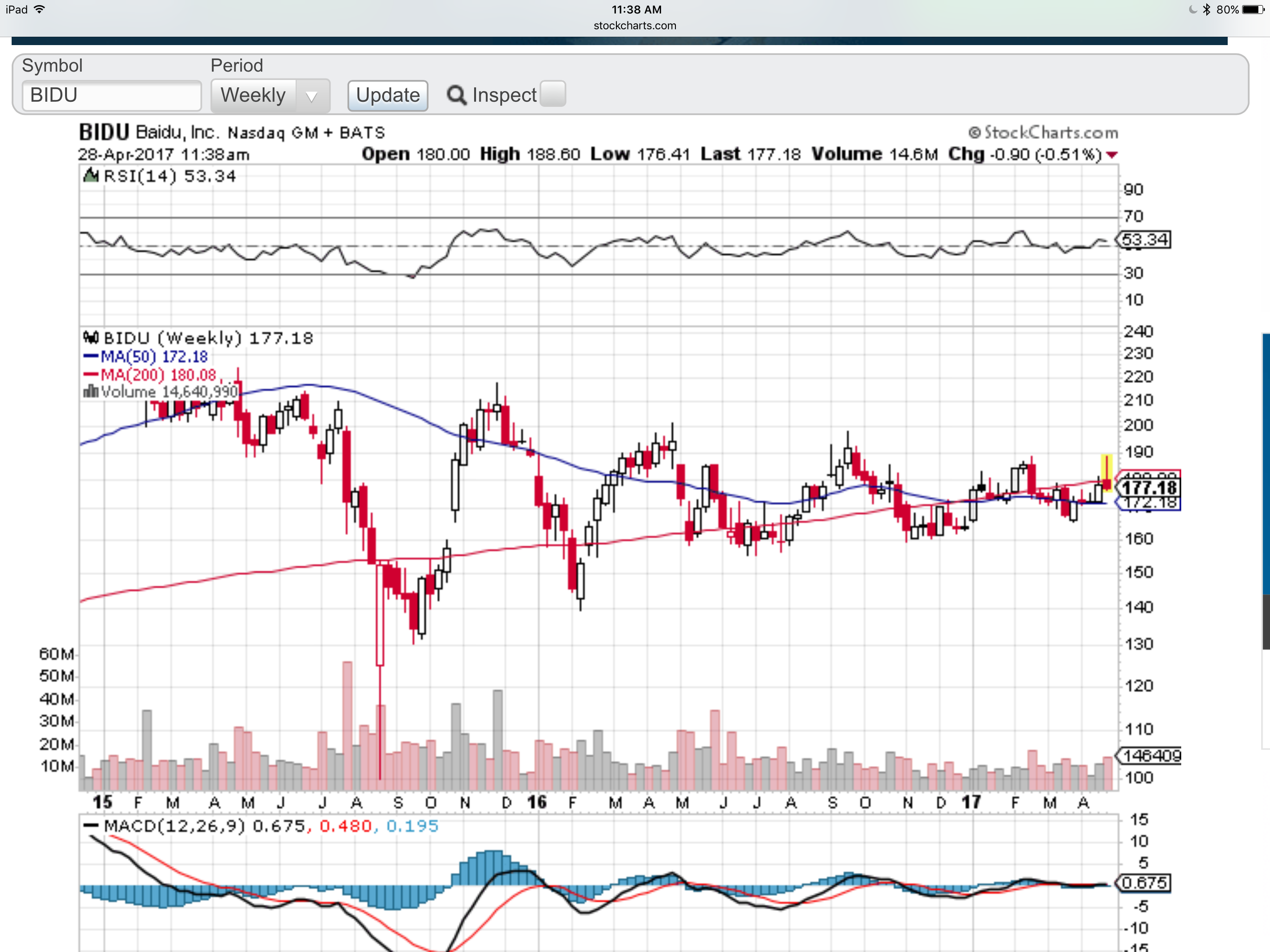One of the positions I have is: long BIDU and short BIDU 428/17, strike 175 options. BIDU reported earnings last night and the stock price went down a bit. I bought back my 175 calls, and sold the same strike ($175), expiring on 7/21/17, for a credit spread of $5.5/share (credit spread: sale price – purchase price > 0).
For each share of bidu, I sold for $5.5. The margin requirement for each share (i.e., the cash required) is ~$50. The duration of the options contract is 84 days.
ROI (Return On Investment) analysis : (5.5/50) * 100%=11% (i.e., 11% return in 84 days). To convert to one year’s ROI: (11/84) * 365 = 47.8%.
The breakeven point of this trade is 175 (stirke price) – 5.5 (profit from options sale) = $169.5. In other words, even if BIDU drops from 180 to 169.5 (5.8%) 0n 7/21/17, I break even. Or the downside protection is 5.8%.
BIDU chart: BIDU broke out of resisnce around 175. It’s 200 MA (moving average) is 180. So I chose 175 to be on the more conservative side (since this is a joint account with other investors in the group). If it were only my personal account, I might even push for a strike at 180, which will give a higher potential return and also, of couse, lower downside protection.
Note: the above calculation is a brief one without considering the transaction fees and margin interest, all of which become very nominal when the total trading value is relatively high.

